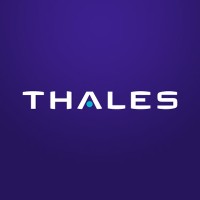
SentinelOne
Strong
SentinelOne is a leading AI-powered cybersecurity company. The SentinelOne Singularity platform, built on the first unified Data Lake, is revolutionising security operations, with AI, solving use cases across Endpoint Protection, SIEM, Cloud Security, Identity Threat Detection and 24x7 Managed Threat Services. SentinelOne empowers the world to run securely by creating intelligent, data-driven systems that think for themselves, stay ahead of complexity and risk, and evolve on their own. Leading organizations—including Fortune 10, Fortune 500, and Global 2000 companies, as well as prominent governments – trust SentinelOne to Secure Tomorrow™. Learn more at sentinelone.com. ----------------------------------------------------------------------------- SentinelOne is recognized in leading 3rd party forums such as; - Gartner Endpoint Protection Magic Quadrant as a Leader 2020, 2021, 2022, 2023, 2024 - Gartner Peer Insights Customer Choice for Endpoint Protection - Gartner Peer Insights Customer Choice Managed Detection & Response - Gartner Peer Insights Customer Choice Cloud-Native Application Protection Platform (CNAPP) - G2 #1 Ranked Cloud Workload Protection Platform - Mitre ATT&CK 100% Detections, No Delays 2020, 2021, 2022, 2023, 2024 - Mitre Managed Services 100% Major Step Detections 2024 - Fortune Fifty 2024 - Deloitte Fast 500; 2019, 2020, 2021, 2022, 2023, 2024 - CRN Cloud & Security 100 - CRN Most Influential CEO's - CRN Top 10 Coolest GenAI Products, PurpleAI To learn more about our products and services, please visit our website at sentinelone.com to schedule a demo
